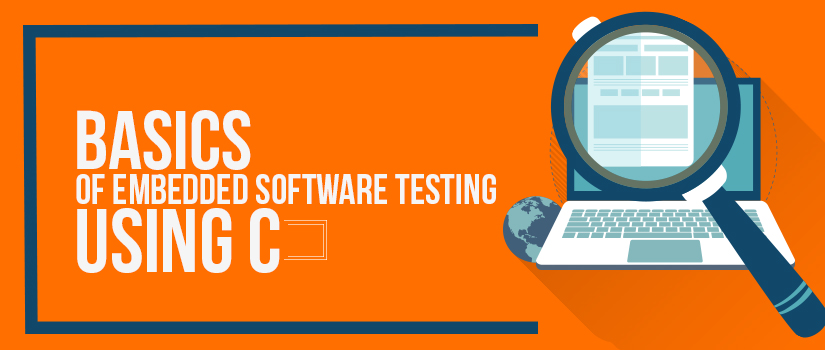
Basics of Embedded Software Testing Using C
September 26th, 2017

Testing is an integral part of the software development lifecycle. In case of embedded systems the need for testing is even greater because of the unique features & functionalities it has to offer. Embedded systems such as those present in the gadgets, used as part of your daily activity such as the transmission system or locking system in your car, the television remote, the smartphone etc., all suffer from space and time constraint. Nevertheless, the response is needed in real time.

If the system is not able to override the time constraint then it will be termed as a system failure. This unique environment and constraints of embedded systems make it incumbent on testers to test the software rigorously. A big challenge for testers is the decreasing design cycles for developing as well as supporting new technologies. The ever proliferating range of communication mechanisms and hardware platforms necessitates the use of automated C unit testing tools.
Using Automated C Unit Testing Tools
Developers writing automated testing tools in C find enhanced quality in their software. With the usage of such testing tools, the design also improves and the time constraints of the project becomes more manageable. In normal cases, developers have to write a large set of automated tests and change codes several times during development of embedded systems. Doing the same with automated tools such as automated C unit testing tools helps the process, the software, the project as well as the developer.
The unique and very much sought after dimension of using automated C unit testing tool is that every time the code is changed all the relevant tests are run automatically. Such continuous integration is very much an essential part of good embedded software testing.
Testing Embedded Systems is Unique
Though the testing process for embedded systems is much like testing software, there are features that differentiate embedded systems clearly from other software systems.
- Application development and execution platform are separate for embedded systems, but not in system software
- For embedded systems there is a large variety of hardware where the system is expected to be executed. This is not so in case of software
- The deployment architecture in case of embedded systems is also different from other system software. Embedded systems typically are feedback control algorithm
- In embedded systems there is a co-existence of various implementation models unlike in application software
- The execution platforms in case of embedded systems impose strict time and space constraints. Response has to be in real time and resource is bare minimum
- There is an ever increasing standard of quality and certification for embedded systems
- Embedded systems may have characteristics that are quite different from applications software. These characteristics also need to be reflected in the test plan
All these issues do affect the ease and range of testing of embedded systems.
- Regression Testing with C
Developers change the codes again and again to arrive at an optimum set. Every time the code is changed or modified, automatic testing should be run to ensure that the modifications have not broken the intended behavior of the software. Through C test scripts, such tests can be automated. This can bring down bugs to a great extent. If you design a definite set of inputs/outputs the automated regression test with C will automatically execute the defined number of tests and then compare the output against the “best output” scenario. Every time the developer incorporates a change the full regression test is run to ensure that the process is not broken.

- Black Box Testing with C
Black box testing is integral to embedded systems, like application software. However, because of the nature of possible inputs in embedded systems the range of black box testing is comprehensive in such systems. With automated testing tools using C black box testing can be performed quite efficiently.
How Embedded Systems Affect these Testing Procedures
Since embedded systems are designed on a platform that is completely different from the platform it is targeted and deployed, the platform is exclusively intended for the end user. Dealing with the dual platform issues, the testing tools play a crucial role and transparent, but efficient way possible. In fact, such complexities are normally hidden from the end-users.
Final Words:
It’s difficult, rather highly contentious, to give an exact overview in short. Thus testing timing constraints is as important as testing functional behaviour for an embedded system.
If the timing short comes of the system are not met, system failure is said to have occurred. And for some systems, identified as safety-critical, failure is not an option.


 Software Testing Events
Software Testing Events App Testing
App Testing Web App Testing
Web App Testing Game Testing
Game Testing Automation Testing
Automation Testing Load Testing
Load Testing Security Testing
Security Testing Performance Testing
Performance Testing Hire a Tester
Hire a Tester





